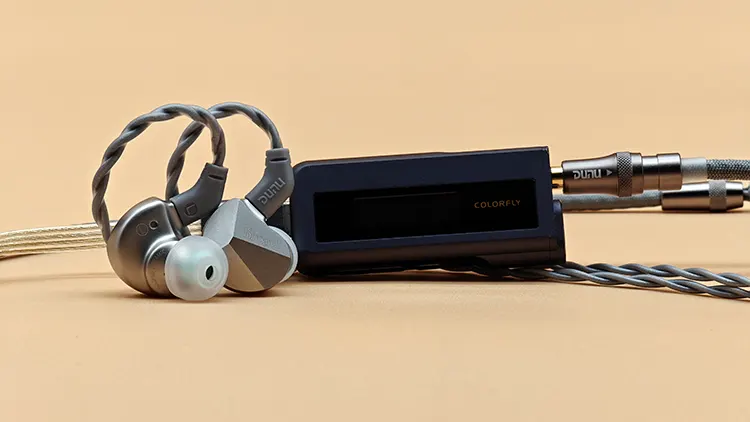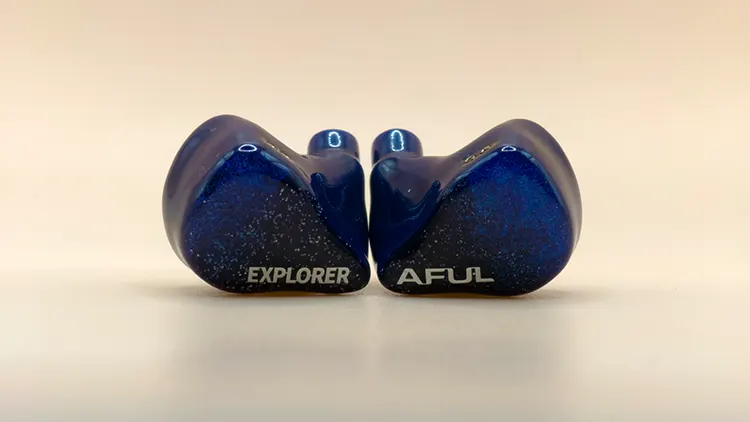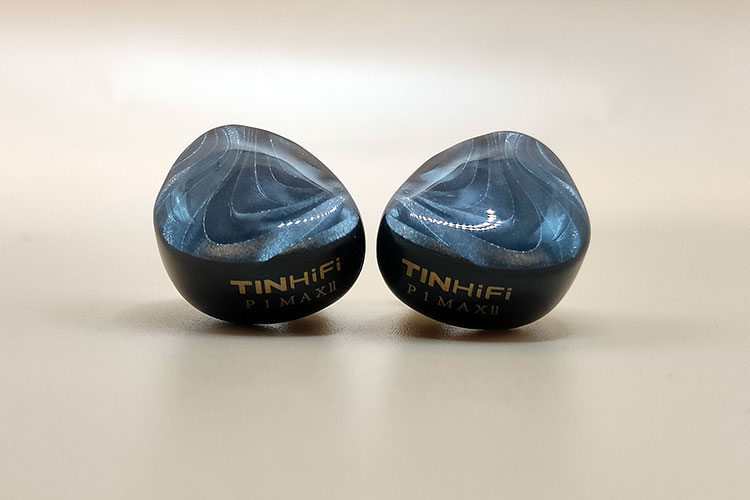Synergy
Efficiency
The DUNU KIMA 2 features a sensitivity of 108 dB/Vrms and an impedance of 32Ω, making it easy to drive with a wide range of devices.
Whether connected to a smartphone, laptop, or dedicated audio player, it performs consistently without requiring excessive power though I would not rate it as overly sensitive either.
At lower volumes, the tonal balance remains intact, with the midrange and treble maintaining their clarity. However, the sub-bass presence slightly diminishes at lower listening levels, reducing the impact of the low-end.
Increasing the volume brings out the full potential of the KIMA 2, with the dynamics and energy of its sound signature becoming more apparent. Notably, the bass gains more presence and punch, while the mids and treble stay cohesive and smooth.
Pairings
The DUNU KIMA 2 performs consistently on an Android phone with a 3.5mm jack, retaining its original sound signature without any noticeable coloration. This makes it a reliable choice for casual listeners who don’t use additional audio equipment.
Pairing it with the Colorfly CDA-M2 brings an added layer of clarity, making the details in the mids and treble more pronounced. The bass remains controlled, and the overall presentation feels more refined and precise.
When used with the HeartField R1, an R2R portable DAC amp, the sound signature shifts to a more lush and intimate presentation. The midrange benefits from this pairing, making vocals and instruments feel closer and more emotionally engaging.
With the FiiO JA11, a portable dongle DAC, the tonality leans brighter, shifting from the KIMA 2’s typical warm presentation. Vocals become more forward in the mix, giving a different perspective that emphasizes clarity and sharpness over warmth.
Select Comparisons
AFUL Explorer
Technical
The AFUL Explorer utilizes an in-house developed 8mm dynamic driver and 2 balanced armatures configuration.
The precise configuration is a single dynamic driver for the lows, and the two balanced armatures are responsible for mids and treble.
The Explorer is rated with an impedance of 26Ω and a sensitivity of 108 dB/Vrms making it slightly easier to drive than the KIMA 2 on paper though the gap is marginal.
Design
The AFUL Explorer’s design is visually captivating, featuring a starry night faceplate with a glittery mix of blue and black. The branding, with “EXPLORER” and “AFUL” printed on the faceplate, adds a refined touch that complements the celestial theme.
The shell seamlessly transitions from the faceplate, adopting a darker shade of blue that enhances its overall cohesiveness. Made from smooth acrylic, both the faceplate and shell exude a premium feel and finish.
Its design incorporates a single vent near the nozzle. This vent support ensures comfort and performance without adding extra openings.
Performance
The bass of the DUNU KIMA 2 emphasizes balance and control, delivering punchy mid-bass with textured detail but lacking the sub-bass depth of the AFUL Explorer. The Explorer’s sub-bass focus offers powerful rumbles and superior layering, creating a more immersive low-end experience.
While the KIMA 2 exhibits some bass bleed into the mids, it maintains a balanced presentation and avoids muddiness. The Explorer excels in bass layering but can feel congested in busier tracks, whereas the KIMA 2 handles separation more effectively.
In the midrange, the KIMA 2 presents warm and natural vocals with lifelike timbre, offering a smooth and cohesive performance. The Explorer captures more vocal texture but suffers from an elevated breathiness that makes its timbre occasionally feel artificial.
The Explorer’s mids have a darker tone with laid-back characteristics, contrasting the KIMA 2’s clarity and consistent tonal balance. The KIMA 2 outperforms here in resolving abilities, ensuring no loss of detail even in complex tracks.
The treble on the KIMA 2 is well-extended, capturing nuances with impressive clarity and refinement. The Explorer takes a more subdued approach, offering a smooth and relaxed treble but falling short in technical detail and sparkle.
Both IEMs offer similar soundstage sizes, creating an intimate yet engaging presentation. However, the Explorer surpasses the KIMA 2 in imaging, delivering more precise placement of instruments and vocals within the stage.
TinHiFi P1 Max II
Technical
Both IEMs are single drivers, however, the TinHiFi P1 Max II incorporates a single 14.2mm planar magnetic driver, an advanced N52 magnetic steel, and a 2-micron diaphragm.
The planar driver is paired with a lightweight aluminum diaphragm coil. This design ensures accurate sound delivery with minimized distortion across frequencies.
Additionally, the P1 Max II is rated at 16Ω with a sensitivity of 98 dB/mW @ 1kHz so more efficient than the KIMA 2 but far less sensitive.
Design
The TinHiFi P1 Max II has a 3D-printed resin shell, offering a lightweight build at just 3.8 grams per earpiece. Its ergonomic structure ensures a secure and comfortable fit for extended listening sessions.
The faceplate is designed with a holographic finish, combining gray and silver hues with glitter for a unique visual appeal. Gold-printed branding further enhances the IEM’s refined aesthetic.
Two vents are included in the shell, one near the nozzle and another on the top, to manage air pressure effectively. The sleek and compact design combines functionality with striking looks.
Performance
The bass on the DUNU KIMA 2 is controlled and textured, providing a refined and balanced low-end presentation. Meanwhile, the TinHiFi P1 Max II offers a more powerful and energetic bass, emphasizing sub-bass rumble and impact.
The KIMA 2 avoids bass bleed, maintaining clarity across its frequency range, while the P1 Max II prioritizes a dynamic low-end that can occasionally overshadow the rest of its tuning. Despite this, the P1 Max II’s bass is undeniably engaging and fun for listeners seeking a more visceral experience.
The midrange on the KIMA 2 is lush and natural, creating an inviting vocal presentation that feels cohesive. The P1 Max II, while musical and enjoyable, struggles with thinness in the mids and sibilance that occasionally affects vocal clarity.
Vocals on the KIMA 2 remain warm and detailed, blending harmoniously with the overall signature. In contrast, the P1 Max II’s mids, though lively, can feel inconsistent due to their interaction with the upper frequencies.
The treble on the KIMA 2 is extended and refined, capturing subtle nuances without sharpness or harshness. The P1 Max II, despite using a planar driver, offers only average detail retrieval in the treble, with a tendency toward sibilance that may fatigue sensitive listeners.
Both IEMs deliver adequate staging, with the P1 Max II showcasing slightly better imaging accuracy for instrument placement.
However, the KIMA 2 excels in dynamic consistency, providing a balanced and reliable experience regardless of listening volume, unlike the volume-dependent performance of the P1 Max II.
My Verdict
The DUNU KIMA 2 delivers a refined sound signature, offering detailed bass, warm mids, and inoffensive treble.
It has above-average build quality, a lightweight design, and a variety of included tips making it a comfortable and versatile IEM for extended listening sessions.
With natural timbre and consistent dynamics, the KIMA 2 has a cohesive and enjoyable sound signature.
For those seeking an affordable balanced-sounding IEM that handles various genres well without fatigue, the KIMA 2 is worthy of a demo.
DUNU KIMA 2 Technical Specifications
- Driver Type: One (1x) 14.6mm DLC Composite Diaphragm Dynamic Driver
- Plug: Q-Lock Mini Modular Cable (3.5mm/4.4mm)
- Frequency Response: 5Hz – 40kHz
- Impedance: 32Ω @ 1kHz
- Sensitivity: 108 dB/Vrms






